A 10×30 tent is a spacious, versatile shelter ideal for outdoor events, offering durable frames and waterproof canopies. Perfect for weddings, parties, or gatherings, it provides ample space and ease of setup.
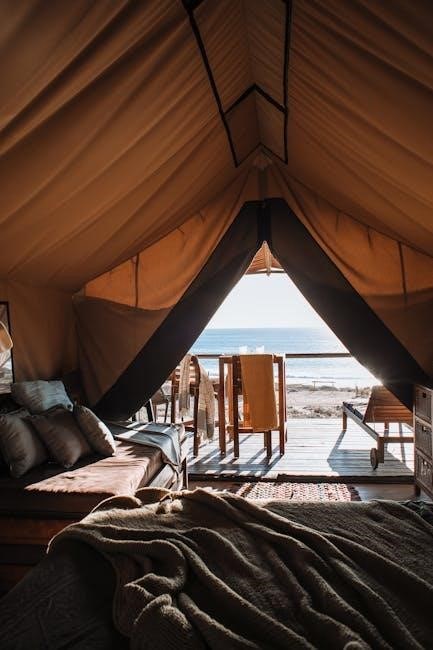
1.1 Key Features of a 10×30 Tent
A 10×30 tent offers a spacious, durable, and versatile shelter for outdoor events. Its robust frame is typically made of high-strength materials like anodized aluminum, ensuring stability and longevity. The waterproof canopy provides excellent protection against rain and UV exposure, while fire-retardant fabric enhances safety. This tent size is ideal for accommodating large gatherings, with enough space for tables, chairs, and decorations. Many models feature easy-to-assemble designs, with labeled parts and color-coded connectors for a hassle-free setup. Optional sidewalls and customizable configurations allow users to tailor the tent to their specific needs. Its lightweight yet sturdy construction makes it portable and easy to store, making it a practical choice for weddings, parties, and commercial events.
1.2 Popular Uses for a 10×30 Tent
A 10×30 tent is a versatile and practical solution for various outdoor events. Its large size makes it ideal for hosting weddings, parties, corporate gatherings, and community events. Many users rely on it for festivals, fairs, and even as temporary storage solutions. The tent’s spacious interior accommodates tables, chairs, and decorations, making it perfect for creating a comfortable and sheltered environment. Its durability and ease of assembly also make it a popular choice for sporting events, outdoor markets, and seasonal celebrations. Whether for personal or commercial use, the 10×30 tent offers a reliable and stylish way to host events of all sizes, ensuring guests remain protected from the elements while enjoying the occasion.
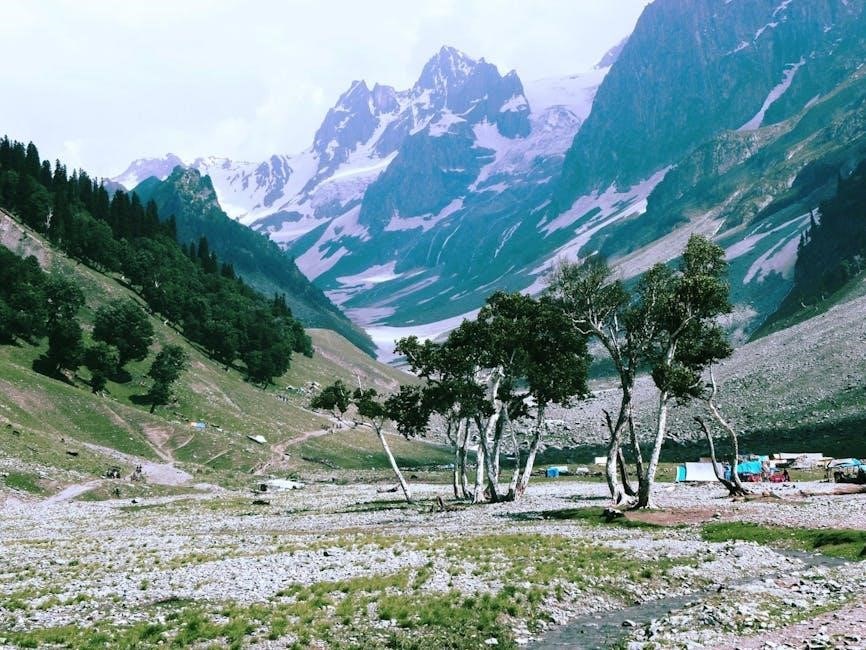
Pre-Assembly Preparation
Ensure the site is clear, level, and dry. Unpack and organize all components, checking for completeness. Gather necessary tools and accessories for a smooth setup process.
2.1 Choosing the Right Location
Choosing the right location for your 10×30 tent is crucial for a successful setup. Ensure the area is flat, dry, and free from obstructions like trees, rocks, or power lines. Avoid low-lying spots prone to water pooling. Opt for a site with grass or soft ground to securely stake the tent. Measure the space to confirm it accommodates the 10×30 footprint. Consider wind direction to position the tent for stability. Ensure easy access for setup and guests. Verify local regulations for permits or restrictions. Clear debris and level the ground if necessary. Proper site selection ensures safety, stability, and an ideal setup for your event.
2.2 Unpacking and Organizing Components
Unpacking and organizing the components of your 10×30 tent is essential for a smooth setup process. Start by carefully unpacking the tent from its storage bag and laying out all parts on a clean, dry surface. Verify that all items, such as poles, frames, stakes, ropes, and fabric, are included. Organize the components into groups based on their function, such as structural frames, canopy fabric, and securing accessories. Use labels or separate areas to keep similar parts together, preventing confusion during assembly. Pay attention to any instructional labels or markings on the components, as they may indicate specific assembly sequences. Keeping everything organized ensures you can quickly locate each piece when needed, saving time and reducing frustration during the setup process.
2.3 Tools and Accessories Needed

Setting up a 10×30 tent requires specific tools and accessories to ensure a secure and efficient assembly. Essential tools include a hammer or rubber mallet for driving stakes, a screwdriver for adjusting frame connections, and an Allen wrench for tightening bolts. Additional accessories like ropes, stakes, and weights are crucial for stabilizing the tent. A measuring tape can help verify the tent’s dimensions, while gloves provide protection during handling. For larger events, sandbags or heavy-duty weights may be necessary to anchor the tent firmly. Ensure all components are included in the kit, and consider having spare stakes and ropes on hand. Organizing these tools beforehand streamlines the assembly process, reducing delays and potential issues during setup.
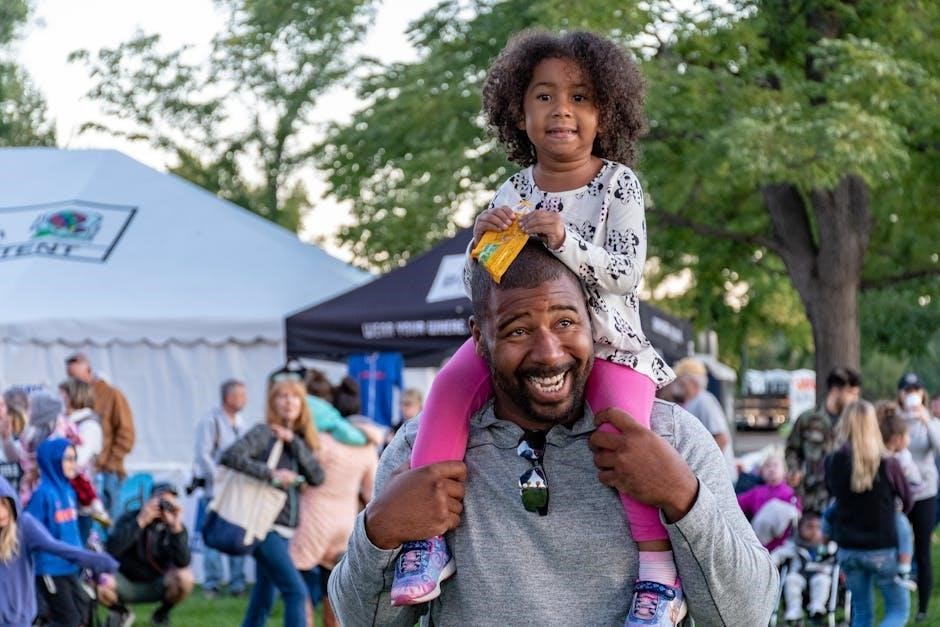
Assembly Process
Assembling a 10×30 tent involves attaching frame sections, connecting poles, and securing the canopy fabric. Follow step-by-step instructions to ensure a stable and proper setup.
3.1 Attaching the Frame Sections
Begin by laying out the frame sections on the ground in their approximate positions. Identify and match the labeled parts according to the instruction manual. Insert the pins into the designated holes to secure the connections. Ensure all joints are tightly fitted and aligned properly. For larger tents, start with the center sections and work outward. Use the provided Allen wrench or tool to tighten bolts firmly. Double-check that all frames are evenly spaced and the structure is square. Avoid over-tightening, as this may damage the connectors. If using a West Coast-style frame, ensure compatibility between fittings. Once the frame is fully assembled, move on to attaching the tent poles and canopy fabric. Properly securing the frame sections is essential for stability and safety. Always refer to the specific instructions provided with your tent for precise assembly details.
3.2 Connecting the Tent Poles
After assembling the frame sections, attach the tent poles to the structure. Locate the designated connectors on the frame and insert the pole ends securely. Tighten the bolts or pins to ensure a firm connection. Ensure the poles are evenly distributed and properly aligned to maintain the tent’s shape. For larger tents, start by connecting the center poles and work outward. Use the provided tools to tighten all connections. Double-check that all poles are fully seated and aligned correctly. Properly securing the tent poles is crucial for maintaining the tent’s structural integrity and ensuring it can withstand wind and weather conditions. If using a West Coast-style frame, ensure pole compatibility with the fittings. Once all poles are connected, proceed to securing the canopy fabric. Always refer to the specific instructions for precise pole placement and tightening sequences.
3.3 Securing the Canopy Fabric
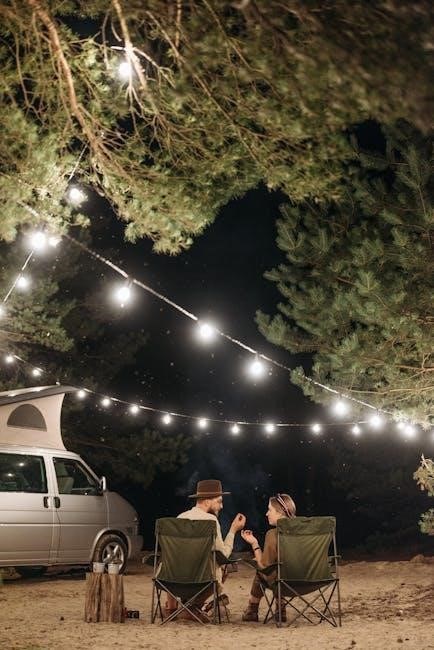
Once the frame and poles are assembled, carefully place the canopy fabric over the structure. Start by attaching the fabric to the center of the frame, ensuring it is evenly spread. Use the provided hooks or straps to secure the fabric to the frame sections. Tighten the straps progressively, working your way outward to avoid wrinkles. Make sure the fabric is taut and evenly aligned to prevent sagging or uneven stress points. If the tent has sidewalls, attach them securely to the main canopy using the provided connectors or zippers. Finally, ensure all ropes and stakes are tightly secured to the ground to maintain stability. Double-check the fabric for proper alignment and tightness before finalizing the setup. Properly securing the canopy ensures a safe and stable shelter for your event;
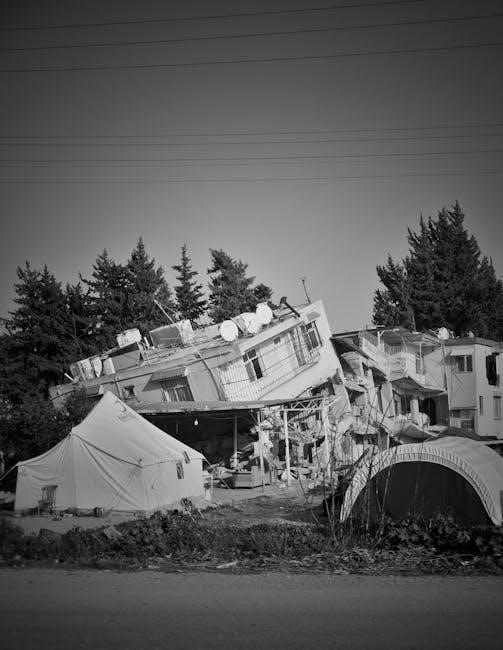
Stabilization and Safety
Stabilization and safety are critical for a secure tent setup. Use stakes and ropes to anchor the tent firmly, ensuring it withstands wind and weather conditions effectively.
4.1 Using Stakes and Ropes Effectively
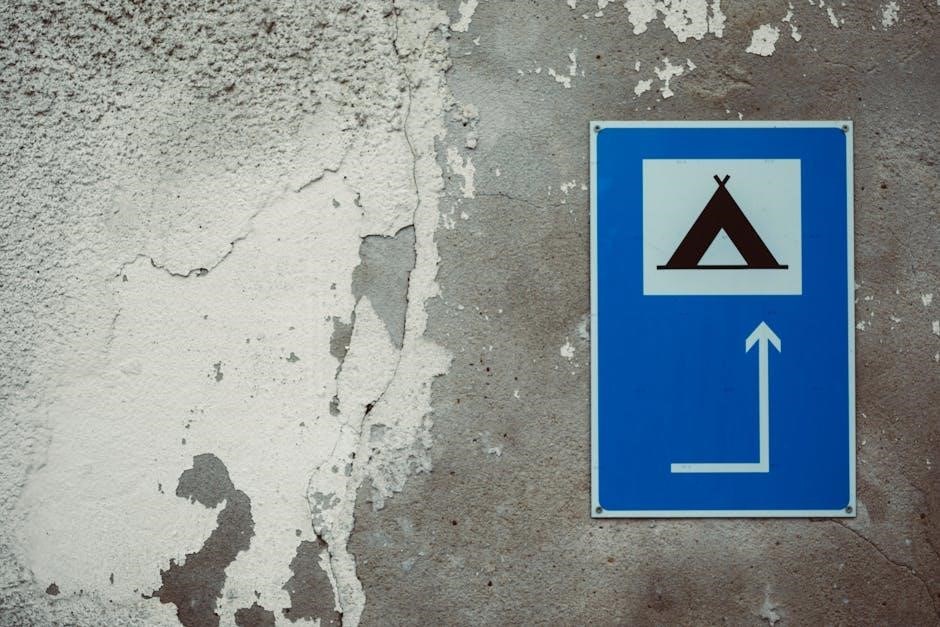
Stakes and ropes are essential for securing your 10×30 tent. Insert stakes into the ground at a 45-degree angle, ensuring they are driven in fully to prevent shifting. Use ropes to tie the tent frame to sturdy anchors like trees or weights. Tighten ropes evenly to avoid uneven tension, which can compromise stability. Check all connections to ensure they are snug and secure. For added safety, tie ropes to ground points or weights to prevent the tent from swaying in the wind. Proper use of stakes and ropes ensures the tent remains stable and safe during events. Always inspect stakes and ropes for wear before setup to guarantee reliability. This step is crucial for maintaining structural integrity and ensuring a secure shelter for your event.
4.2 Securing the Tent with Weights
Weights are a reliable alternative to stakes for securing a 10×30 tent, especially on hard surfaces like concrete or asphalt. Place weights on each tent leg, ensuring they are snug against the base. Use heavy-duty weights or sandbags to provide stability. For added security, distribute the weight evenly across all legs to prevent tipping. On grass, weights can complement stakes for extra stability. Always check the tent after securing to ensure it is level and balanced. This method is ideal for outdoor events where staking is not feasible. Properly securing the tent with weights ensures it remains stable and safe, even in windy conditions; Regularly inspect weights and connections to maintain optimal stability throughout the event.
4.3 Ensuring Structural Stability
Structural stability is crucial for the safety and longevity of a 10×30 tent. Start by ensuring all frame sections are properly aligned and tightly connected. Use diagonal support poles or cross-bracing to reinforce the frame, especially in windy conditions. Tighten all bolts, screws, and connections to prevent movement. Regularly inspect the tent for any signs of wear or damage, addressing issues promptly. Ensure the canopy fabric is evenly spread and securely attached to the frame to avoid sagging or flapping. For added stability, use rope ties or straps to anchor the tent to nearby stable structures. Always follow the manufacturer’s guidelines for weight limits and structural reinforcements. Proper maintenance and inspections will help ensure the tent remains stable and secure during any event.
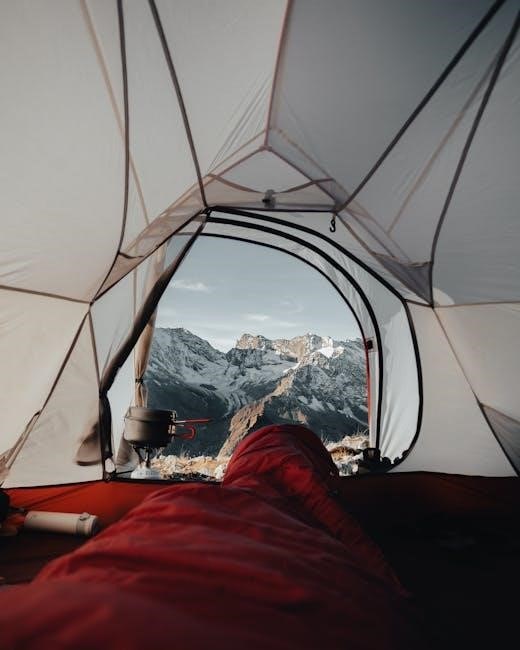
Maintenance and Troubleshooting
Regularly clean the tent fabric and frame to prevent mold and rust. Store the tent in a dry, cool place to maintain its condition. Inspect for wear and tear, addressing issues promptly to ensure longevity. For common problems like loose connections or torn fabric, refer to the troubleshooting guide for quick solutions. Proper maintenance ensures the tent remains reliable for future events.
5.1 Cleaning and Storage Tips
Proper cleaning and storage are essential for maintaining your 10×30 tent. Start by brushing off dirt and debris from the fabric and frame. Use a mild detergent and water to scrub any stubborn stains, avoiding harsh chemicals that could damage the material. Rinse thoroughly and allow the tent to air dry completely before storing to prevent mold and mildew. Store the tent in a cool, dry place, away from direct sunlight. Organize all components, such as poles and stakes, in labeled bags for easy access. Regularly inspect the tent for signs of wear or damage and address them promptly. For long-term storage, consider using a breathable storage bag to protect the tent from dust and moisture. Following these tips ensures your tent remains in great condition for future use.

5.2 Common Issues and Solutions
When setting up or using a 10×30 tent, common issues may arise. One frequent problem is loose connections between frame sections, which can be resolved by tightening all bolts and ensuring proper alignment. Another issue is water pooling on the canopy, which can be fixed by adjusting the fabric to ensure even tension and drainage. If the tent fabric tears, apply a patch kit immediately to prevent further damage. For unstable structures, check stake placements and tighten ropes. If poles bend, carefully straighten them or replace damaged sections. Addressing these issues promptly ensures the tent remains secure and functional. Always refer to the manufacturer’s guidelines for specific solutions tailored to your tent model.
